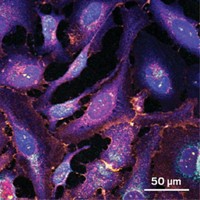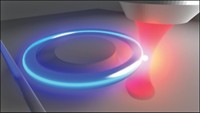Advertisement
Grab your lab coat. Let's get started
Welcome!
Welcome!
Create an account below to get 6 C&EN articles per month, receive newsletters and more - all free.
It seems this is your first time logging in online. Please enter the following information to continue.
As an ACS member you automatically get access to this site. All we need is few more details to create your reading experience.
Not you? Sign in with a different account.
Not you? Sign in with a different account.
ERROR 1
ERROR 1
ERROR 2
ERROR 2
ERROR 2
ERROR 2
ERROR 2
Password and Confirm password must match.
If you have an ACS member number, please enter it here so we can link this account to your membership. (optional)
ERROR 2
ACS values your privacy. By submitting your information, you are gaining access to C&EN and subscribing to our weekly newsletter. We use the information you provide to make your reading experience better, and we will never sell your data to third party members.
Analytical Chemistry
Raman Imaging Breaks The Nanometer Barrier
Spectroscopy: Chemical analysis technique uses double-resonance approach to zoom in on single molecules
by Celia Henry Arnaud
June 10, 2013
| A version of this story appeared in
Volume 91, Issue 23

Raman spectral imaging with resolution better than 1 nm has been achieved by a research team in China, delivering crisper details for chemists to analyze how single molecules behave. Until now, the best spatial resolution for the technique had been in the range of 3 to 15 nm.
“Chemical imaging resolution less than 1 nm is as good as it gets,” says Zachary D. Schultz, a spectroscopic imaging expert at the University of Notre Dame. Scanning tunneling microscopy (STM) has been able to map electronic density of samples at this level for a while, Schultz notes. “But the ability to also use the vibrational modes of parts of molecules is really pretty cool,” he says. That way, scientists can get information about chemical bonds in different parts of the molecule.
Zhenchao Dong, Jianguo Hou, and coworkers at the University of Science & Technology of China achieve the high resolution by carefully controlling the optical properties of the STM used for tip-enhanced Raman spectroscopy (TERS).
The researchers trap sample molecules in a cavity between a metal surface and the tip of the STM probe. Shining laser light on the sample results in Raman scattering from the molecules. It also creates waves of oscillating electrons known as a plasmon on the metal surface. The researchers tune the plasmon so that it is in resonance with both the laser light and the frequency of the Raman emission modes (Nature 2013, DOI: 10.1038/nature12151). That double resonance boosts the Raman signal to achieve spatial resolution better than 1 nm.
“Merging TERS with STM operated at ultrahigh vacuum and low temperature provides excellent control and tuning capability,” Dong says. The researchers tested the method by mapping molecules of an alkyl-substituted porphyrin on a silver surface. The molecule has a distinctive four-lobed shape discernible in the Raman images.
Dong expects the method to be useful in photonics to study the activity of biomolecules and cells. Other applications could include catalysis, molecular electronics, and other fields where single-molecule resolution is important, Dong says.





Join the conversation
Contact the reporter
Submit a Letter to the Editor for publication
Engage with us on Twitter